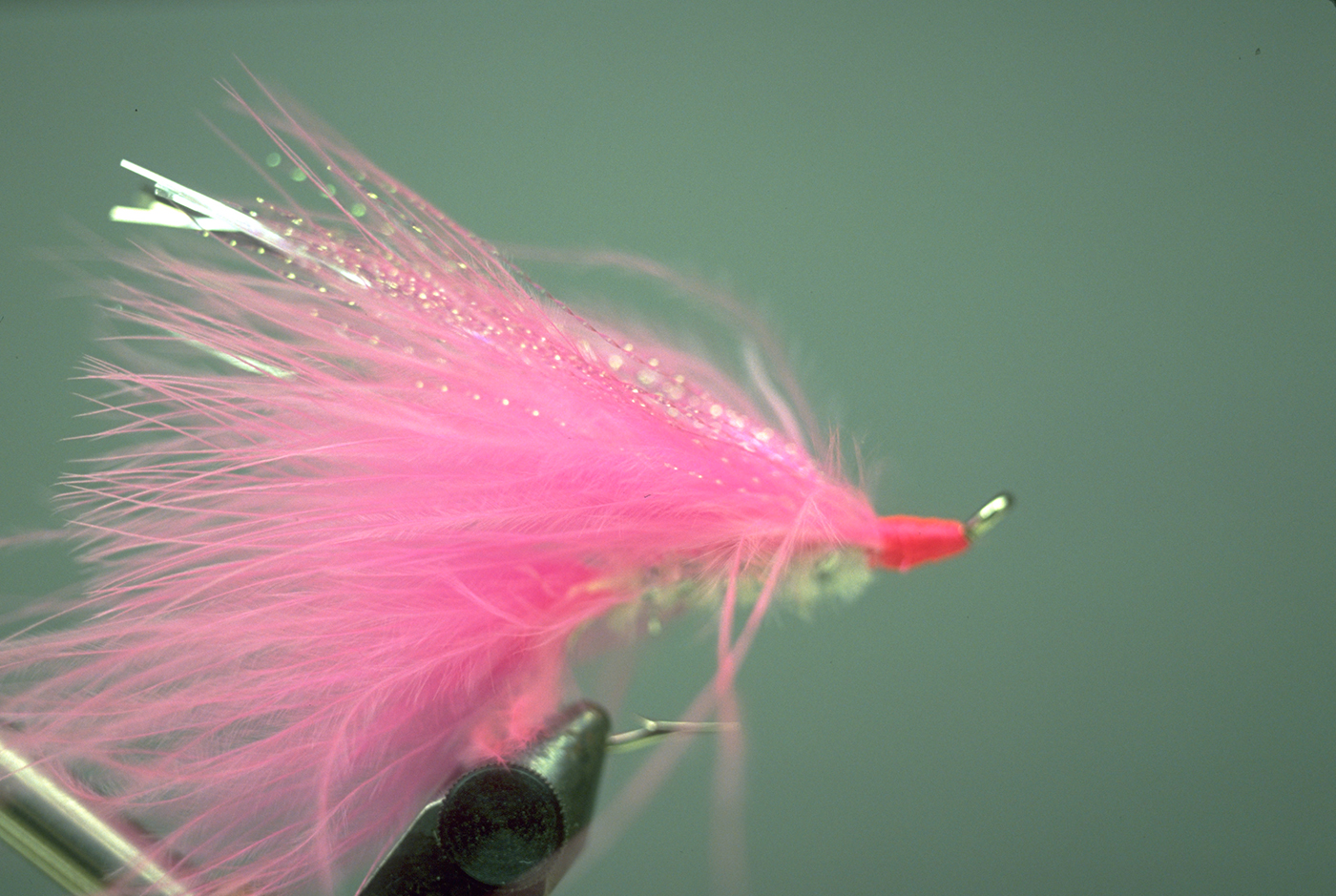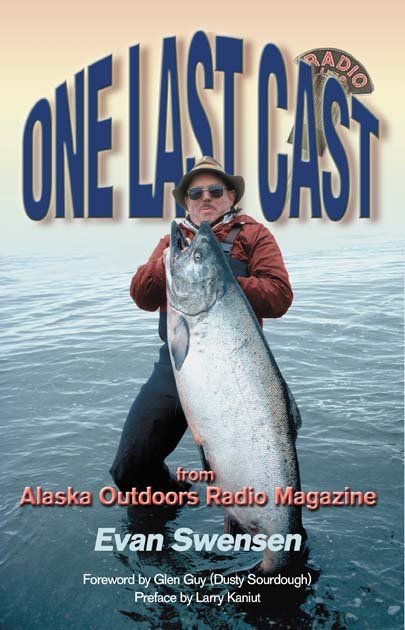One Last Cast
From Alaska Outdoors Radio Magazine
By Evan Swensen
Chapter Sixty-Three
Enid Brown’s First Fish on a Fly

Enid Brown, a Bering Sea Eskimo, has taken thousands of fish. As a young girl, growing up along the Fish River, she spent her summers in the fish camp. She was taught how to catch fish in a subsistence net by her mother and her grandmother. She had never fished with a fly rod and accepted my invitation to teach her the basics of casting.
About 200 yards before entering the Fish River, a small stream narrowed between a gravel bar and a high bank. The bank caused the water to form a series of S-turns. At each turn, a small holding pool was created. A single grayling fed at the top of the first, yet unfished hole. Enid’s first casts were short and poorly placed. Finally, she got the feeling and put a brown, woolly worm in the right spot. She saw the fly drift with the current, heading for the fish’s mouth. Anticipation built to a crescendo in the few seconds it took for the bait to get to the fish. The offering was refused. Twice more, Enid properly placed the fly at the top of the hole, and each time it was snubbed.
I suggested the fish had poor eyesight, and she try a bright yellow woolly worm. It received the same lack of interest. The yellow was easier for us to see in the water and presumably easier for the fish. Each time it drifted through the sweet spot of the hole, the grayling moved over and let it pass. Five times it refused.
Enid thought we should move down to the next hole. I asked her to try a green woolly worm and tied one on for her. By now, her casting skill was improving, and she could hit the current at the top of the hole with regularity. The green presentation was received with like disdain.
I tried to keep the new fly fisherman’s interest by suggesting we try a black woolly worm. She complied, but with less enthusiasm. Her cast hit the edge of the current and drifted to the outside of the hole, missing the target by three feet. The fish spotted the bait, liked what it saw, and moved in for the kill. Like many grayling, it attacked from above. It came out of the water and dove on the fly. Enid’s inexperience made her set the hook before the small mouth of the fish had completely encircled the fly. She felt pressure from the strike, but not enough to hold the fish, and he escaped to the far side of the hole.
Enid’s excitement was evidenced in her next two casts. The first one put the fly on top of a small bush behind her. The second was a well-placed cast to her arm, and she set the hook into her jacket. Then, finally, she settled down, remembered her lessons, thought about her practice casts, and put the bait right on the money.
The fly caught the current perfectly to bring it and the fish together. Enid mended the line at the proper place, and the imitation bug continued in its predestined path. The grayling came to the center of the hole and waited for the fly. The fish moved slowly toward the slowing bait. In the split second of the attack, the drift ended, the speed of the fly increased slightly by the crack-the-whip action of the line, and the fish missed the bait by a feather.
Either the grayling had a short memory or a determined constitution, for it came again on the next cast. What before had seemed to work against the fisherman now combined to put it together. In a split second, flash and splash, Enid was battling her first fly-caught fish. Like all of us with our first fish, she forgot who she was and squealed like a schoolgirl out for recess. The fight was perfectly matched.
She was using a 3 1/2-ounce, 7-foot rod, with a floating line, and a two-pound tippet. The battle continued with splash and dash by the fish and yell and squeal by Enid. It seemed to be a draw for several minutes, but fishing fights do not end in a tie. Finally, the fisherman began to get the edge as the fish tired. Enid eased it into shallow water and picked it up for a photograph. Then, following the lodge’s philosophy, she released it back into the water. Anyone remembering their first fish on a fly rod can empathize with Enid’s feelings at the moment. Enid will improve her skill and knowledge of fly fishing, and she will catch her first Dolly and her first salmon on a fly. Each will be exciting, but I wager my fishing hat, none will be more remembered than her first fish on a fly.


